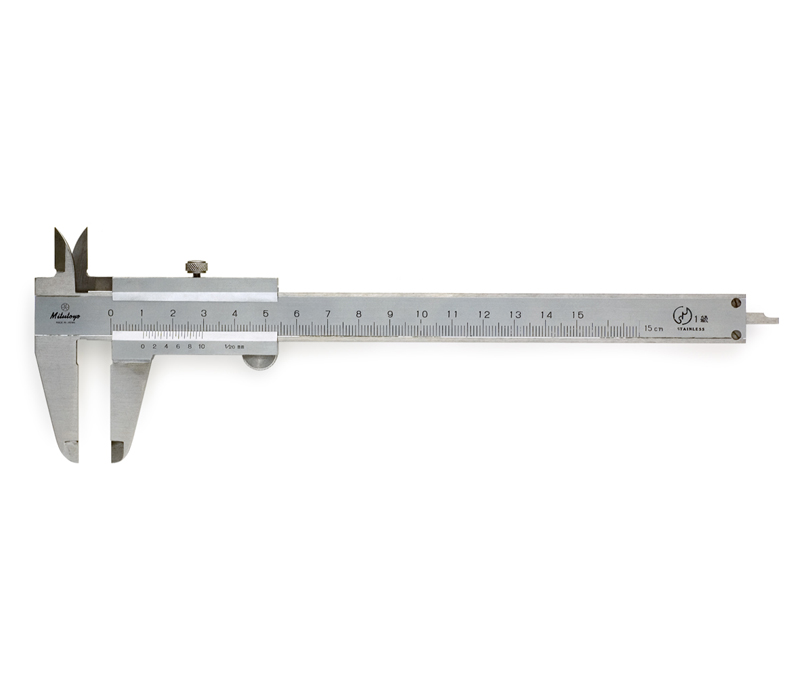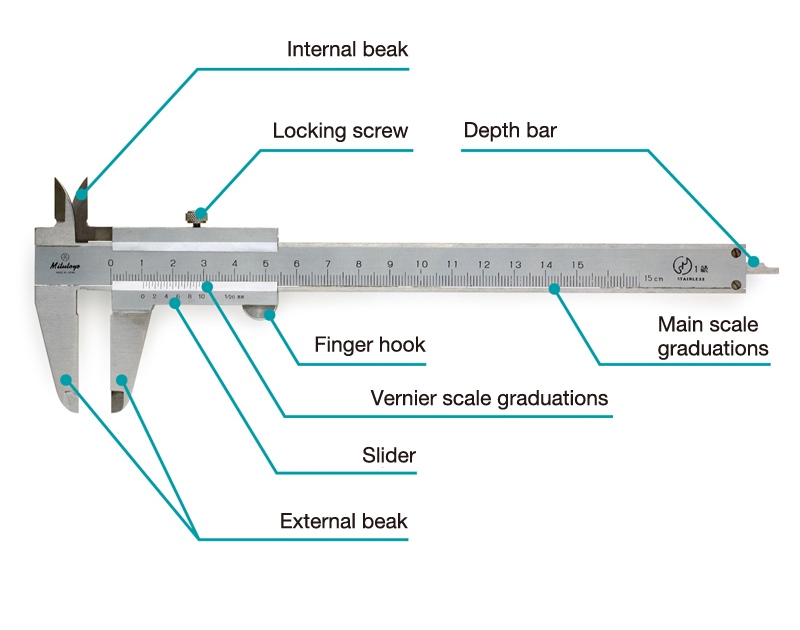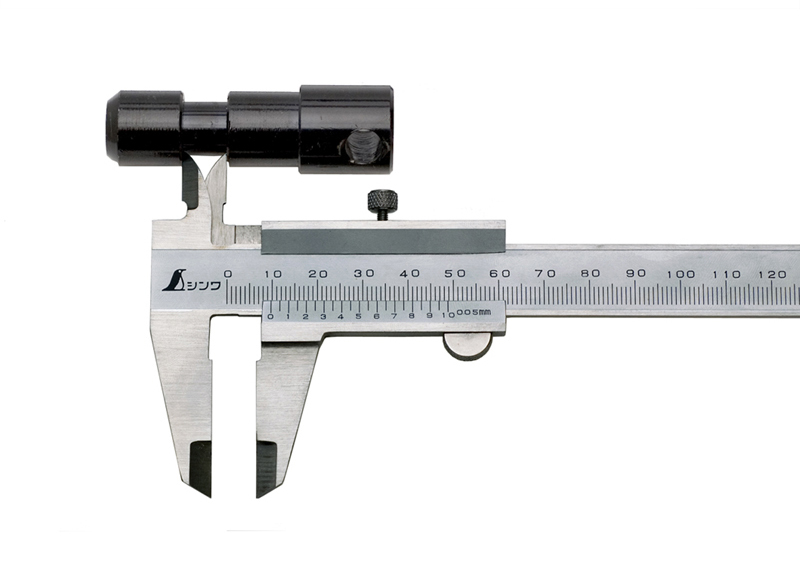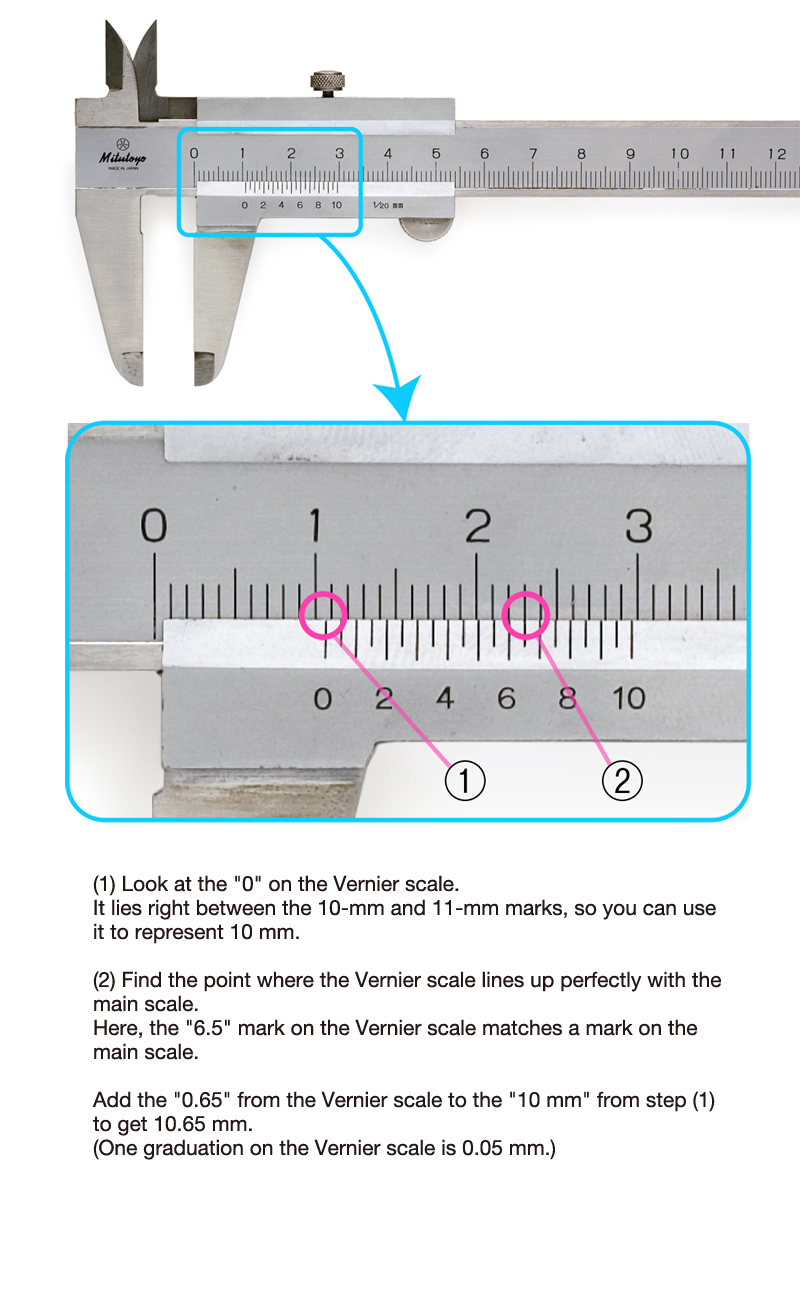Vernier Caliper
ノギス
Nogisu
CATEGORIES
The Vernier caliper is a measuring implement used when it is difficult to take ordinary measurements, to measure such things as the outer diameter of screws and bolts, the inner diameter of pipes, etc. and the thickness of plastic boards, among other things. It can also be used to measure gaps and the depth of grooves and holes. The measurement values are a combination of a main scale and Vernier scale graduations. All measurements for outer diameter, inner diameter and depth, etc. are shown on the Vernier scale. The Vernier scale graduations can be described as the major feature of this caliper, which divide 19 mm equally by 20, enabling measurements in 0.05 mm intervals. (There are also other types of graduations.)
When measuring outer diameter or thickness, the object is gripped between the external jaws of the caliper. When measuring inner diameter, the internal beaks are inserted into the object and expanded. The back of the caliper is used to measure gaps. The jaw attached to the main scale and the beak attached to the slider are alternately locked tightly into the gap. To measure depth, the tip of the main scale is rested on the edge of the hole and the depth bar attached to the rear end of the caliper is extended to the bottom of the hole.
The prototype of the Vernier caliper was invented by the Portuguese mathematician Pedros Nunes (Latin name: Nonius) and it is said that the Japanese word for caliper, “nogisu”, came from a mispronunciation of Nonius. The modern type of Vernier caliper came from the invention by the French mathematician, Pierre Vernier (hence the name). Today, there is also a digital Vernier caliper which displays results in digital format. The Vernier caliper can be purchased at home centers and hardware stores.
RELATED PAGES

 The parts of a Vernier caliper
The parts of a Vernier caliper- Using the Vernier caliper
 Measuring outer diameter
Measuring outer diameter  Measuring inner diameter
Measuring inner diameter- Reading graduations

